|
Cruise Map and Timetable
Tentative schedule
| Date |
Port |
Arrival |
Departure |
| 17.07.2017 |
Nizhny Novgorod |
|
9.00 |
| Chkalovsk |
16-30 |
19.00 |
| 18.07.2017 |
Plyos |
09.00 |
11.30 |
| Kostroma |
15.00 |
20.00 |
| 19.07.2017 |
Yaroslavl |
09.00 |
14.00 |
| 20.07.2017 |
Koprino |
10.00 |
12.00 |
| 21.07.2017 |
Tver |
09.00 |
12.00 |
| 22.07.2017 |
Moscow |
09.00 |
|
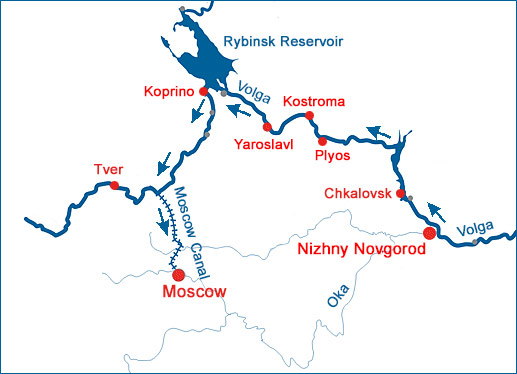
| Nizhny Novgorod is the center of the Volga region. The third largest city in Russia, it was founded in 1221 at the confluence of two big rivers: the Volga and the Oka. Nizhny Novgorod was famous for its trade fairs, which attracted people from all parts of the country as well as from Europe and from the East. ╬f special interest is the Kremlin on the high bank of the Volga River. There are many unique historical, architectural and cultural monuments preserved in Nizhny Novgorod and its vicinity. |
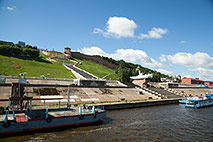 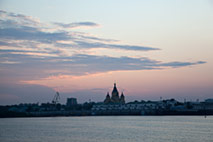 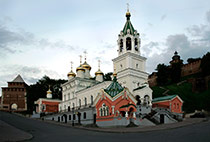 |
| Chkalovsk is a regional city in Nizhny Novgorod Oblast of Russia, the administrative center of Chkalovsk Region. Known since the XII century as Vasilyeva Sloboda, it was renamed Chkalovsk in 1937 after V.P. Chkalov, the famous Russian pilot, who participated in the first non-stop flight from Moscow to Vancouver, WA (USA) via the North Pole. The memorial Chkalov museum is located here. |
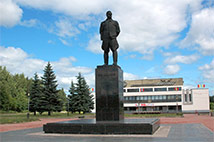 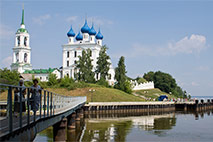 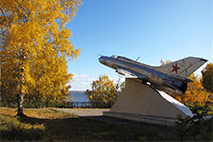 |
| Plyos, this admirable «Pearl of the Volga», is about six hundred years old. For a long time it served as a citadel beating off enemy attacks. Later it turned into a trading centre. The town is situated in a very nice place, the view from the hill tops around the town is one of the most beautiful on the whole Volga, and attracted here many artists and tourists from all over Russia. |
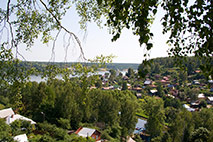 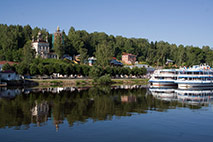 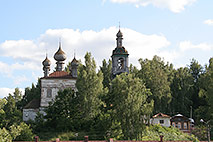 |
| Kostroma was first mentioned in the chronicles in 1213. In 1773, Kostroma was devastated by a great fire. Afterwards the city was rebuilt with streets radiating from a single focal point near the river. One of the best preserved examples of the 18th century town planning, Kostroma retains some elegant structures built in the style that may be called «provincial classicism». |
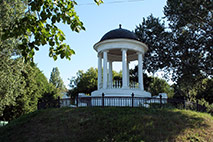 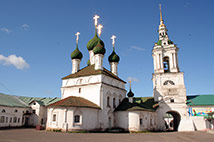 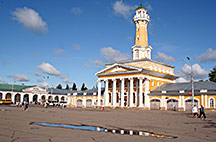 |
| Yaroslavl was founded in the 11th century by Prince Yaroslav I the Wise at the junction of the Volga and the Kotorosl. Its main landmarks are amazingly beautiful cathedrals built in the 17th century, the remains of the golden age of Yaroslavl, when skilful architects and painters worked here. The murals of the Church of Elijah the Prophet in the main square of the city is a unique museum of ancient Russian painting. The Church of St. Nicholas «Nadein» with its carved and gilt baroque iconostasis and the unique Church of St. John the Baptist with its fifteen domes are masterpieces of the heart-warming and magnificent architectural school of Yaroslavl. This year the city will celebrate its millennium. |
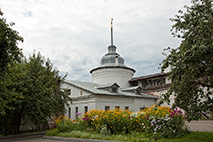 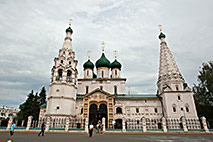 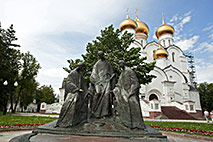 |
| Koprino |
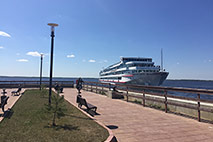 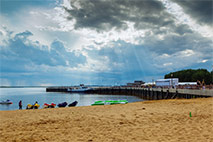 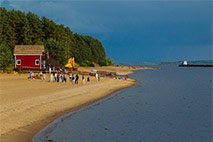
|
| Tver, the administrative center of Tver Oblast and Kalinin Region, is located on the banks of the Volga at the point, where the rivers Tvertsa and Tmaka flow into it, to the north-west of Moscow. It was founded in 1135 at the spit of the Tmaka. Now, Tver is a large industrial, scientific, and cultural center, a major junction point, where the railway line connecting St. Petersburg and Moscow and the "Russia" highway cross the Upper Volga. |
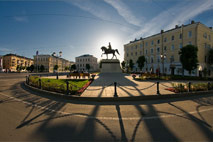 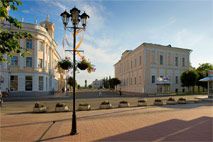 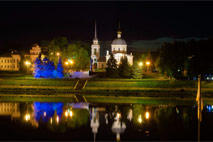 |
| Moscow, the capital, consecutively, of the Great Duchy of Moscow, Tsardom of Russia, Russian Empire, Soviet Russia, the USSR, and the Russian Federation, is the largest by population city of Russia and one of the ten most heavily populated cities of the world. It is an important tourist area of Russia. The Moscow Kremlin, the Red Square, Novodevichy Convent, and the Church of Ascension in Kolomenskoye are on the UNESCO World Heritage list. Moscow is sutuated on the banks of the River Moskva in the center of the East European Plain, in the area between the Oka and the Volga. |
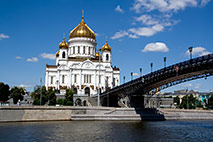 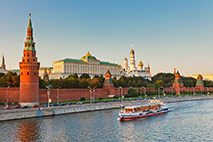 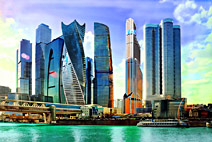 |
|
|